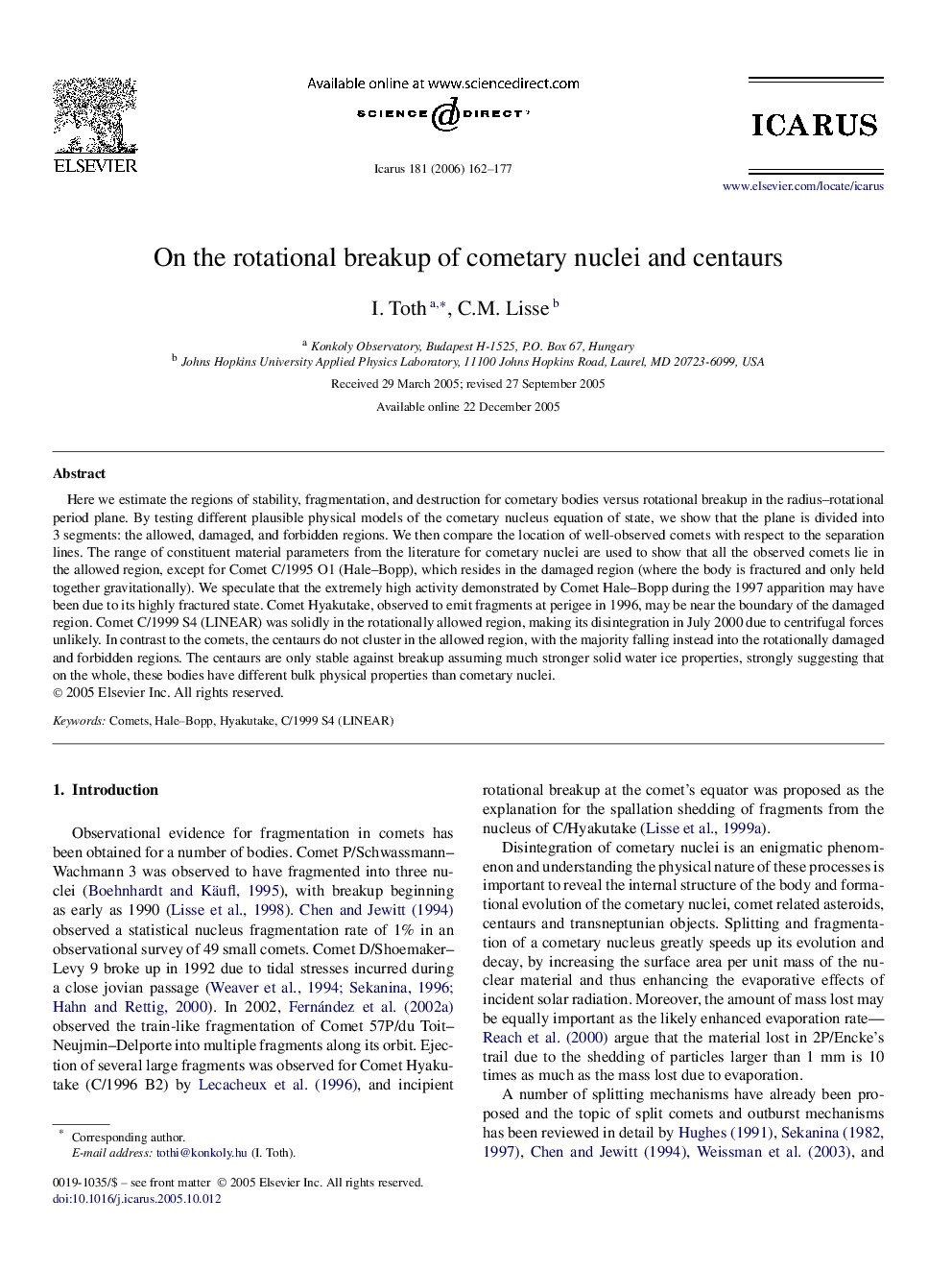| کد مقاله | کد نشریه | سال انتشار | مقاله انگلیسی | نسخه تمام متن |
|---|---|---|---|---|
| 1775884 | 1021210 | 2006 | 16 صفحه PDF | دانلود رایگان |

Here we estimate the regions of stability, fragmentation, and destruction for cometary bodies versus rotational breakup in the radius–rotational period plane. By testing different plausible physical models of the cometary nucleus equation of state, we show that the plane is divided into 3 segments: the allowed, damaged, and forbidden regions. We then compare the location of well-observed comets with respect to the separation lines. The range of constituent material parameters from the literature for cometary nuclei are used to show that all the observed comets lie in the allowed region, except for Comet C/1995 O1 (Hale–Bopp), which resides in the damaged region (where the body is fractured and only held together gravitationally). We speculate that the extremely high activity demonstrated by Comet Hale–Bopp during the 1997 apparition may have been due to its highly fractured state. Comet Hyakutake, observed to emit fragments at perigee in 1996, may be near the boundary of the damaged region. Comet C/1999 S4 (LINEAR) was solidly in the rotationally allowed region, making its disintegration in July 2000 due to centrifugal forces unlikely. In contrast to the comets, the centaurs do not cluster in the allowed region, with the majority falling instead into the rotationally damaged and forbidden regions. The centaurs are only stable against breakup assuming much stronger solid water ice properties, strongly suggesting that on the whole, these bodies have different bulk physical properties than cometary nuclei.
Journal: Icarus - Volume 181, Issue 1, March 2006, Pages 162–177